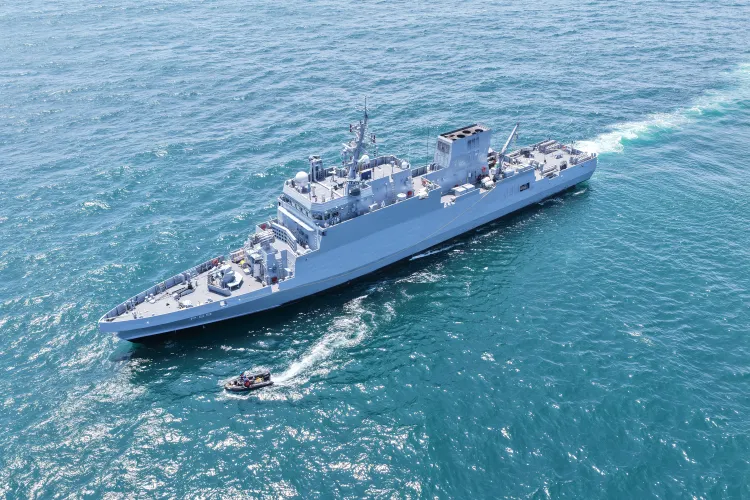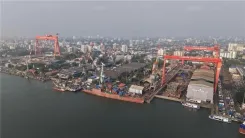Is the Indian Navy Ready to Commission Androth with Over 80% Indigenous Content?

Synopsis
Key Takeaways
- Androth enhances Navy's ASW capabilities.
- More than 80% indigenous content.
- Constructed by GRSE in Kolkata.
- Honors the legacy of INS Androth (P69).
- Strengthens India's maritime security.
New Delhi, Oct 6 (NationPress) In a significant advancement for maritime capabilities, the Indian Navy is prepared to commission Androth, the second Anti-Submarine Warfare Shallow Water Craft (ASW-SWC), during a ceremonial event on Sunday at the Naval Dockyard located in Visakhapatnam, Andhra Pradesh.
The event will be graced by Vice-Admiral Rajesh Pendharkar, the Flag Officer Commanding-in-Chief of the Eastern Naval Command.
According to a Naval spokesperson, "The commissioning of Androth represents another significant milestone in the Indian Navy's ongoing journey towards capability enhancement and indigenisation."
This induction is part of a broader trend that has seen numerous cutting-edge warships added to the naval fleet in recent months.
The name 'Androth' carries both strategic and symbolic meaning, originating from Androth Island in the Lakshadweep archipelago, highlighting India's dedication to protecting its extensive maritime territories.
Previously, INS Androth (P69) served the nation with honor for over 27 years prior to its decommissioning.
The commissioning of the new Androth pays tribute to the legacy and spirit of its predecessor.
Constructed by Garden Reach Shipbuilders and Engineers (GRSE) in Kolkata, Androth stands as a testament to India's increasing maritime self-sufficiency, boasting more than 80 percent indigenous content.
The vessel reflects the Navy's dedication to bolstering indigenous capabilities through innovative technologies and domestic solutions.
As stated by an official, "The commissioning of Androth will greatly enhance the Navy's ASW capabilities, particularly in addressing threats in coastal waters."
This reflects the Navy's ongoing focus on indigenisation, innovation, and capability enhancement, while also emphasizing the crucial role of GRSE in fortifying India's maritime security framework.
These recent inductions, including Arnala, Nistar, Udaygiri, Nilgiri, and now Androth, illustrate the Navy's balanced development across the range of maritime operations.
Ultimately, they embody the essence of 'Aatmanirbharta' (self-reliance), showcasing a high level of indigenous content, design expertise, and home-grown innovation emerging from Indian shipyards and industries.









